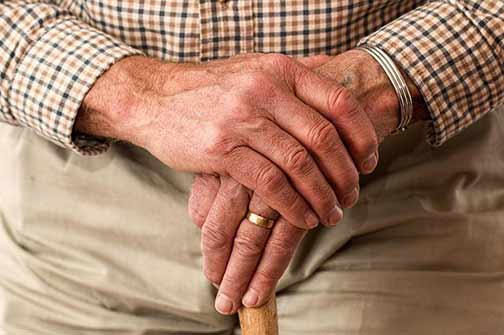When people get older, many things they did in the past without difficulty or assistance suddenly become a chore. As folks age, they may find themselves shut out of places or activities they love simply because of how the environment is designed.
With stairs and narrow doors everywhere, life can be hard for people with mobility issues. Most places are simply not designed with wheelchairs or walking sticks in mind. But the worst difficulties senior citizens face are often the ones they must deal with in their own homes.
Older people who are used to doing things for themselves live with the daily frustration of relying on others for simple things. Those feelings are often compounded by the constant risk of accidents in their own home, says Keyrenter Jacksonville. Nowhere is this danger more present than in the bathroom.
As far as slips and falls are concerned, bathrooms are the most dangerous room in the home. No one is immune to bathroom accidents but seniors with their slower reflexes and reduced muscle mass are often more vulnerable than other people.
Designing bathrooms with older people’s safety in mind is vital. Safer bathrooms, not only protect older folks from injury, but they also let them recover their dignity. Bathrooms designed with the needs of seniors in mind also relieve their loved ones of the need to worry about them.
Guidelines for making bathrooms safer for seniors
Making a bathroom safe for seniors is not hard; it just takes attention to detail. Below are strategies for designing the various aspects of a bathroom to make them safer for seniors. These steps won’t only make the bathroom safer but easier to use for those older people with arthritis.
Bathroom access
Seniors with incontinence issues often need to get to the bathroom fast, so access to the room should be easy. The path should be free of barriers or loose objects. Lighting is also critical. There should be sufficient light sources along the route and light switches must be easy to reach.
Bathroom doors and door handles
Bathroom doors must be at least 80 cm wide. They should open easily and intuitively. Use lever knobs in place of round knobs. Round knobs require twisting and they often present a challenge for folks who have lost their grip strength due to arthritis. For easy access during emergencies, there should be no locks on bathroom doors.
Bathroom flooring
Most bathroom accidents involving seniors happen when they are trying to get out of the bathtub or shower. Floors that become slippery from soap and water are a hazard. There are lots of ways to make bathroom floors safer such as using nonslip mats or rugs, rubberized floors, and installing ceramic or epoxy flooring.
Raised toilets
Due to loss of muscle tone, older people may have trouble sitting on a standard toilet and getting up after using it. To make the toilet easier to use it should be wedged to raise it around 46 cm. It is also possible to do this with risers.
Grab bars or tension pole
Grab bars assist with balance and stability during high-risk movements like sitting on a toilet, and getting in or out of the shower stall, and tub. They should be in easy-to-reach places. Tension bars may also help; they reach from the floor to the ceiling and provide something to hold onto while bathing.
ADA-compliant faucets
These are easier for seniors to use because they don’t have spherical knobs which need to be gripped in order to turn them. With these types of faucets, the risk of losing balance when attempting to turn the water on and off is lower. ADA-compliant faucets typically have lever taps or electric sensors.
Shower box
The shower box should be at least 80 cm which is wide enough to accommodate another person. A second shower head is also recommended. Preferably, a handheld shower since they are easier for the elderly to use. A shower chair is also necessary for folks with stability issues or difficulty standing.
Additional safety measures for the bathroom
Place items within easy reach
Seniors should be able to reach toiletry items without having to stretch or bend. Putting items within easy reach can be as simple as placing them along the shower wall or having them inside a caddy over the shower head.
Bathroom lighting
Bright lights that are well-placed reduce the risk of accidents. Lights should provide uniform illumination across the entire bathroom; dark shadows in parts of the bathroom increase the risk of accidents.
Bathroom paint
High gloss paints and shiny tiles produce glare; they should be avoided. Matte finishes are a safer option. Contrasting color patterns for walls and floors also make the bathroom easier to navigate and safer.
Elderly bathroom alert system
The above precautions do not eliminate the possibility of accidents; they reduce them. Having systems in place that make it easy for the senior person to ask for help during an emergency is important. These can include sensors in rooms and on the occupant, as well as alarms and emergency buttons.
